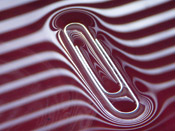Continue to work on problem solving for momentum in one dimension.
Momentum Unit Test on Tuesday, March 3.
Starting Wednesday: Torque and Rotational Motion!

Learn Physics – Mr. Trampleasure
Resources for high school physics students and teachers
What are the two things needed for an object to have momentum?
Answer: Mass and speed.
Complete Page 4: Newton’s 1st Law question.
Honors students will need to take a photo of a physics phenomena and describe the physics principles demonstrated by the photo.

Photos and essays must be submitted electronically to your teacher by 11:59pm, Wednesday March 11th.
Emphasis is on the composition of your photo and the accuracy of your physics explanation. 60% of your grade will be based on how well your photo captures a physics phenomena, and 40% of your grade will based on the quality and accuracy of your essay.

There are two categories of photos. Your can decide which category you enter.
(1) Natural photos are those that involve everyday situations that may demonstrate a variety of physics concepts.
(2) Contrived photos are those that are set up to show a particular physics concept or related set of concepts.

You can see past year’s top national photos here.
Original photos may be cropped for better composition (as long as the final product is still an 8” x 10” or 8½” x 11” print). Minimal manipulation of digital images with the intention of accurately rendering the subject is acceptable e.g.: small adjustments to brightness, color, color balance and/or sharpness, is acceptable. This is not a contest to see how well you can manipulate photos; emphasis is on the composition of your photo and the accuracy of your physics explanation.
All photos must be taken with a digital camera, and the original image must be emailed to your teacher. In order to avoid plagiarism, you must also submit an additional photo ‘selfie’ showing you in the photo (take this right before or after you take your contest photo).
Each photo must include a brief essay of 250 words or less describing the physics in the photo.
Essays will be submitted to TurnItIn.com to check for plagiarism.
The top 15 student photos will be entered in the American Association of Physics Teachers National Photo Contest (we can only submit 15 per school).
Of the 15 selected, 10 photos/essays will be chosen by teachers, and 5 will be through a student vote.
In your own words, define the word momentum. Next, give an example of two objects where one has more momentum than the other.
Today you will be learning about momentum. Most people have a natural grasp of what momentum means…so remember that as we begin our study. You may have some mistakes in your knowledge, and you may not know the math formula, but I bet you could describe two things that have different momenta (the plural of momentum is momenta).
Watch the first 3:41 minutes of this video.
Play this video all the way through.
Read pages 374-377 in the textbook, then answer the rest of the questions and problems on the worksheet.
If there is extra time in class, this video introduces momentum in collisions.
Hint: A “vector quantity” just means you have to pay attention to the direction. You’ll spend more time on vectors later in math, but all you need to remember is that you can have positive or negative momentum if they are going in opposite directions.
Elastic collisions are ones where the two objects bounce off each other and don’t stick. Inelastic collisions are where they stick together and move as one object after the collision.
Today we will be looking at the energy unit test, then continuing to work on momentum and collisions.
Momentum test on Friday.
Look at your notes sheet with your table partners. Add one thing to your notes that your partners had but you didn’t, and write this in your warmup section as well.
Read problems 46-55.
Working in trios, you will be assigned one problem. For each problem:
Solve six of five of problems 46-55.
Copy and fill in the following table:
| P wave | S wave | |
|---|---|---|
| Stand for | ||
| Type of wave | ||
| Faster or slower | ||
| More or less damaging | ||
| Earth moves up/down or forward back |

Here are the solutions to the homework problems, so you can check your work:
Tomorrow we will look at collisions in two dimensions!